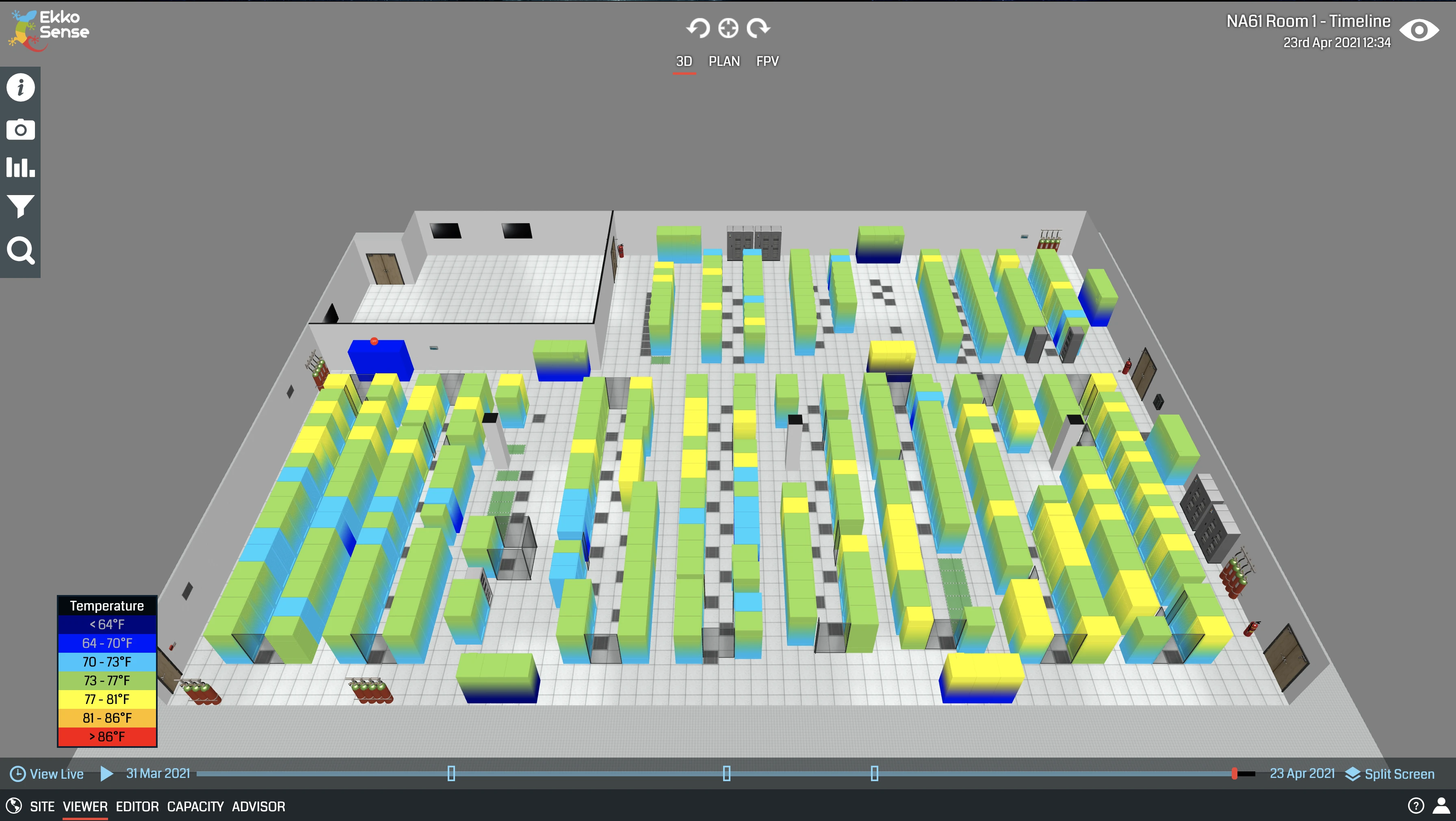[VIDEO] Data Center Optimization: 5 Steps of AI/ML-Enabled Data Center Operations15 min read

Artificial intelligence and machine learning are changing the landscape for data center optimization, but if operations teams are to take full advantage of its potential, it’s important that they take a structured approach to its deployment. These are the five key steps underpinning AI/ML-enabled data center operations, and the specific benefits that you can expect to unlock by following this approach.
- Gather accurate cooling, power, and space data at a highly granular level – this allows you to observe how your data center is performing in real-time. The illustration used in this blog represents a room that would produce over 100,000 new data points each day. These data points are measuring what’s happening at the cooling units, rack temperatures, what the UPS is doing, what power is being produced, and then correlating all that data in real-time.
- Visualize complex data easily and quickly – as humans we’re simply not good at staring at complex spreadsheets and trying to extrapolate what they are telling us. What we need is a new way to understand the relationships between all those data points, understand the Zones of Influence, and learn what impacts what. Thermally you want to see those greens and light blues, not the dark blues and reds. By creating comprehensive 3D digital twin visualizations, it’s a lot easier for data center teams to monitor and interpret this information – making it much easier to see what’s happening across your estate, highlighting potential anomalies and displaying suggested airflow and cooling improvements.
- Apply machine learning and AI analytics to provide actionable insights – augmenting measured datasets with machine learning algorithms to provide data center teams with easy-to-understand insights to support real-time optimization decisions, backed by data. By applying machine learning and AI to the operations of a data center to address areas such as cooling optimization and airflow management – these technologies can be applied to deliver significant results. AI and machine learning changes the landscape, taking all those complex data sets and crunching the numbers, and doing in seconds what would otherwise take weeks if manually done. With AI in place, you benefit from fully correlated real-time data that’s presented in a distinctive, actionable way.
- Ensure delivery with actionable recommendations for human auditability – rather than rely on unwieldy automation solutions, a light-touch approach to data center infrastructure management reduces error, with operations teams supported by AI-powered, actionable recommendations for greater human auditability. Operators still maintain control over decisions, recognizing that often they will have insights that simply weren’t available within the data sets. And because optimization recommendations are presented each time for human auditability, data center teams are always on hand to ensure that any changes are delivering the expected results.
- Deploy an ongoing continuous optimization approach – giving data center staff the capability for continuous optimization, while supporting them in keeping pace with their ever-changing critical facilities. You cannot optimize periodically and expect to stay in sync. Drift is natural, because regardless of how static you believe your environment to be, change is always occurring. The machine learning algorithm is persistently monitoring and analyzing your environment. It is always looking for ways to improve the operation of the environment, allowing you to continually improve the way you operate the facility.
Real-time monitoring, data-driven optimization.
Immersive software, innovative sensors and expert thermal services to monitor,
manage, and maximize the power and cooling infrastructure for critical
data center environments.
Real-time monitoring, data-driven optimization.
Immersive software, innovative sensors and expert thermal services to monitor, manage, and maximize the power and cooling infrastructure for critical data center environments.
0 Comments